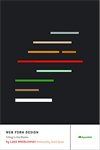Jen Simmons’ HTML5 APIs session was an interesting look into the back-end of HTML5, an area that I’m not as familiar with. Lots of new goodness about how we can make HTML not only create a basic layout but actually devise interactions, storage and flexibility.
Presenters: Jen Simmons (@jensimmons)
Hashtag: #html5apis
(more…)


